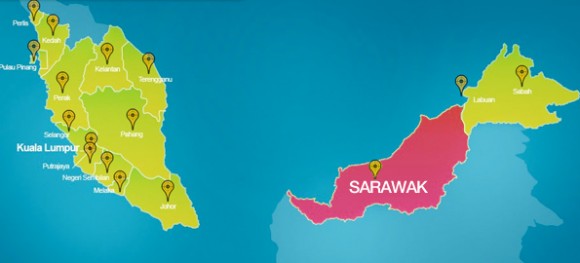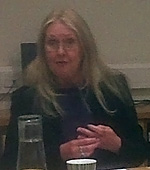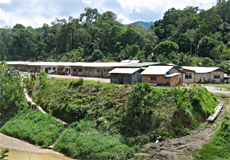THE normative story of Malaysia goes something like this: in 1961, the newly independent Federation of Malaya’s Prime Minister Tunku Abdul Rahman, suggested the formation of a wider federation. This would consist of Malaya, Singapore, Brunei, Sarawak and Sabah.
Malayans and Singaporeans agreed, but Sabahans and Sarawakians were not wholly convinced. Neighbouring Philippines objected, asserting claims over Sabah. Indonesia saw the suggestion as a neo-colonialist project. Nevertheless, in 1962, the Cobbold Commission found that the majority of Sabahans and Sarawakians agreed to the new federation. On 16 September 1963, the Federation of Malaysia consisting of Malaya, Singapore, Sabah and Sarawak was formed. Brunei declined to join, and Singapore left the federation in 1965.
Normative historical narratives are often contested, and this narrative is no different. But this commentary is concerned with how the narrative took shape after the formation of Malaysia, specifically in relation to Sarawak. In other words, it was one thing to make Malaysia, but then how did the founders of Malaysia go on to make Malaysians?
How the Iban became Malaysian
This was the subject of a 21 April 2011 seminar at the British Museum’s Centre for Anthropology, titled Media and Nation Building: How the Iban became Malaysian. The seminar featured a dialogue between anthropologists Dr John Postill of Sheffield University and Dr Felicia Hughes-Freeland of Swansea University. Postill did long-term ethnographic fieldwork in Saribas, Sarawak in the late 1990s. His book Media and Nation Building was published in 2006, which was reviewed by Hughes-Freeland for the Journal of the Royal Anthropological Institute.
Granted, the discussion was steeped in anthropological theory and methodology, but some crucial perspectives emerged, which are invaluable in understanding not only Sarawak and Malaysia, but nation-building in general. Postill focused on the role of the media in nation-building, and his main finding was that the Malaysian state was remarkably successful in using the media to create a distinctive Malaysian identity among the Iban. As an anthropologist of media, his definition of media is creative — for example, he includes the assignment of essay topics in government schools in his analytical framework.
From this approach, he found that a distinctive Malaysian worldview and self-identification was created among the Iban through policies which implicated media consumption. He cited examples such as the setting of Bahasa Malaysia as Sarawak’s official language, and the imposition of a single time-zone between West and East Malaysia. Such state-directed initiatives, he argued, helped create a commonality of cultural elements in Sarawak, specifically among the Iban in his study.
These cultural elements get consumed, circulated and reproduced via different media channels — for example music, television, school textbooks, and translations of the Bible. This is not to say that Iban Malaysians are single-mindedly nationalist in their consumption of Malaysian media. Postill observed, for instance, that in the longhouses he stayed at, some families were more inclined to tune into Indonesian soap operas because these were seen as “better quality” than Malaysian soap operas.
But, the argument continues, the pervasiveness of this Malaysianisation programme, carried out through various media outlets, has created Sarawakian Ibans who identify primarily as Malaysian. There is merit to this argument: In 2006, a Merdeka Center survey of 18–32 year old Malaysians found that 63% of Sarawakian Bumiputera saw themselves as Malaysian first, compared to 61% of Malays who saw themselves as Muslim first.
How Malaysians become Malaysian
Now comes the tricky part, which was not wholly addressed in the seminar. Yes, it can be contended that the federal state’s use of media has succeeded in creating a Malaysian identity among Sarawakians. The question now is, how does this fit with dominant perspectives of Malaysian identity — specifically those emanating from Peninsular Malaysia? It is one thing for the majority of Sarawakians to identify as Malaysian, but do other Malaysians — specifically Peninsular Malaysians — interpret “Malaysian-ness” in the same way?
For instance, do some in West Malaysia view Sarawakian Malaysian-ness as subservient to Peninsular Malaysian-ness? For the Sarawakians who identify as Malaysian first, do they interpret this as being equal with the rest of the country, or as a Malaysian-ness that defers to other more dominant kinds of Malaysian-ness?
 |
| Map of Malaysia (pic from http://www.tourism.gov.my/) |
These questions are not meant to be exhaustive or potentially exclude further possibilities of being Malaysian. But the exercise here is not for us to find a singular, correct answer. Rather, the exercise is to use Postill’s approach as a starting point to analyse some of the more pressing concerns of the day. For example, let us take the related issues of the use of “Allah” by Malaysian Christians, specifically Sarawakians, and the use of Malay-language Bibles.
New encounters
A successful nation-building project in Sarawak would probably mean that Christian Bumiputera (whether Catholic or Protestant) now view their religious beliefs as part and parcel of their national identity. Thus, using “Allah” to address the Christian God and Malay-language Christian Scriptures would be the Malaysian thing for them to do, would it not? Furthermore, when more Sarawakians (and Sabahans) go to Peninsular Malaysia to study, work, or start families, would it not be natural for them to seek continuity in their now-Malaysian traditions of Christian worship? If the nation-building project is working, should this not be unproblematic for other Malaysians?
But we are seeing something very different developing in the public discourse. There seems to be a lack of appreciation among some quarters — specifically certain Peninsular Malay-Muslim pressure groups — of these evolutions of national identity among Sarawakians. How can we explain and therefore approach this phenomenon satisfactorily?
Postill’s approach suggests we can gain important insights by looking at the sorts of philosophies and sentiments circulated via a variety of media channels. We can then see how these shape individual and collective consciousness and how these in turn are articulated. In this case, we could see how media not only aids, but potentially disrupts, nation-building.
For example, are there blogs or online forums that spread antagonistic theories about East Malaysian Christians? Who are the producers and consumers of these blogs and what happens when these individuals encounter flesh-and-blood East Malaysian Christians? Although this is just one example, these bottom-up perspectives of nationhood not only complement top-down narratives, but can be important correctives if they are backed by sound empirical data.
By Shanon Shah thenutgraph




No comments:
Post a Comment